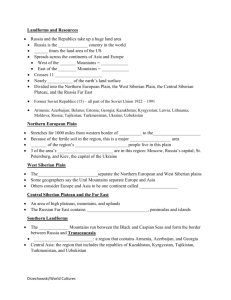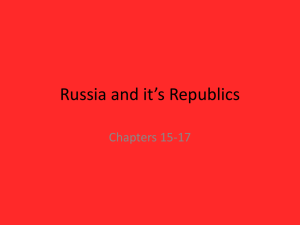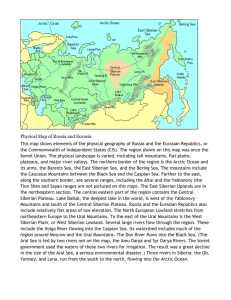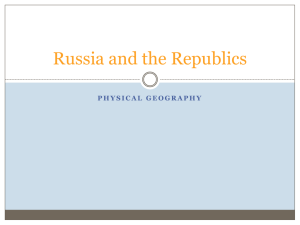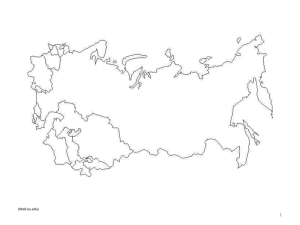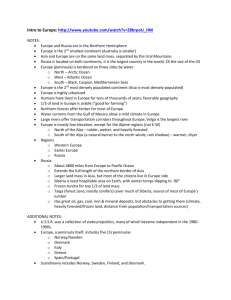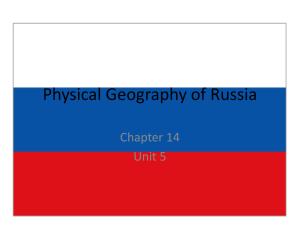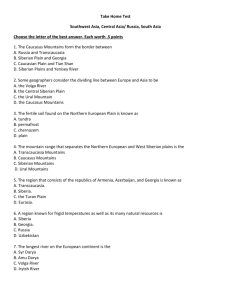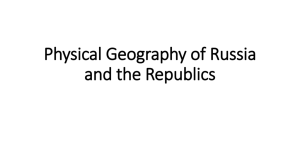Attachment A: Student Geography Notes on Russia and Central Asia
advertisement
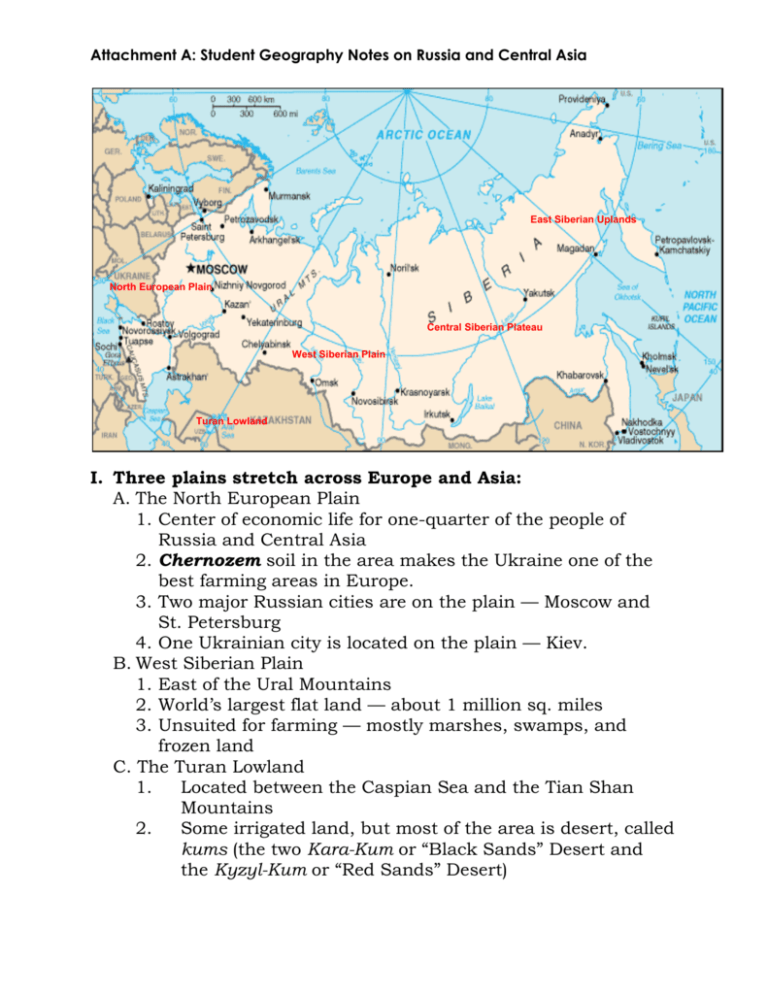
Attachment A: Student Geography Notes on Russia and Central Asia East Siberian Uplands North European Plain Central Siberian Plateau West Siberian Plain Turan Lowland I. Three plains stretch across Europe and Asia: A. The North European Plain 1. Center of economic life for one-quarter of the people of Russia and Central Asia 2. Chernozem soil in the area makes the Ukraine one of the best farming areas in Europe. 3. Two major Russian cities are on the plain — Moscow and St. Petersburg 4. One Ukrainian city is located on the plain — Kiev. B. West Siberian Plain 1. East of the Ural Mountains 2. World’s largest flat land — about 1 million sq. miles 3. Unsuited for farming — mostly marshes, swamps, and frozen land C. The Turan Lowland 1. Located between the Caspian Sea and the Tian Shan Mountains 2. Some irrigated land, but most of the area is desert, called kums (the two Kara-Kum or “Black Sands” Desert and the Kyzyl-Kum or “Red Sands” Desert) II. Mountains and plateaus A. Carpathian Mountains border the Ukraine. B. Caucasus Mountains separate Azerbaijan and Georgia. C. Ural Mountains separate Europe from Asia and European Russia from Siberia. D. East Siberian Uplands form the largest region in Siberia E. Central Siberian Plateau III. Seas and lakes A. Many rivers and lakes are ice covered most of the year. B. The Black Sea (warm water sea) empties into the Mediterranean Sea. C. The Caspian Sea is the largest inland body of water in the world. 1. The Caspian Sea is shrinking due to evaporation and irrigation. D. The Aral Sea is also shrinking due to evaporation and irrigation. E. Lake Baikal in Siberia is the oldest (25 million years) and deepest lake in the world. 1. Contains one-fifth of the world’s fresh water 2. Holds more water than the five great lakes combined 3. It would take all the water from all the major rivers in the world to fill Lake Baikal. IV. Rivers A. The Amur River flows east and forms the boundary between Russia and China. 1. This is the only agricultural area in east Siberia B. The Lena, Yenisey, and Ob Rivers flow north and are frozen most of the year. C. The Volga River flows into the Caspian Sea. 1. Longest river in European Russia 2. Most important waterway in Russia 3. Important for hydroelectric power V. Climates A. The climate of the region is influenced by the following: 1. Lack of mountains to break the hot winds from deserts and cold winds from the north 2. Its location in the higher latitudes 3. Cold water bordering the region on the north B. The climate range is the largest in any region of the world. 1. Subarctic in the north 2. Continental in the middle 3. Subtropical near the Black Sea VI. Facts about the region A. Russia is the largest country in the world. B. Russia has more natural resources than any country in the world, but they are hard to get to and transport. C. The rivers are frozen over in northern Siberia and are used as highways. It’s easier to travel in the winter than the summer. D. Roads in northern Siberia are not paved because of the extreme cold. They are gravel roads and are very muddy in the summer. E. Homes in northern Siberia are built on pilings because the heat generated in the house will melt the permafrost and cause the house to collapse. F. There are 11 time zones in Russia; the sun is rising in the east as it is setting in the west. G. In 1992, Ukraine reported a 900% increase in leukemia near the Chernobyl nuclear power plant. H. Items the Russians like the most from the U.S. are T-shirts, blue jeans, rock and country/western recordings, chewing gum, and baseball caps. I. In Moscow, the subways are clean, efficient, and beautifully decorated. J. In 1993 shortly after the fall of Communism, the average salary was $14.00 a month. K. Salt and other minerals blowing off the Aral Sea’s dry seabed have shortened the life expectancy and led to high death rates for mothers and newborns as well as caused many infections, respiratory diseases, eye infections, hepatitis, throat cancer, and severe anemia. L. The railroad system in Russia is the greatest mover of people in the world. It has 90,000 miles of track.
